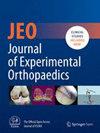Optimizing operating room efficiency in robotic-assisted total knee arthroplasty through manufacturing efficiency principles
Abstract
Purpose
Recent studies have explored the application of manufacturing efficiency principles as a framework for improving operating room (OR) throughput, quality of care and patient outcomes. However, these principles have not yet been validated with real-world research data. In this study, we investigated whether applying these principles has an impact on the operational excellence and teams' consistency of robotic-assisted total knee arthroplasty (RATKA) procedures.
Methods
A total of 31 patients, divided over eight surgery days, were included in the study. The aim of the study was to answer the research question: ‘Does applying efficiency principles have an impact on the operational excellence of RATKA surgery?’ The efficiency of the procedures was monitored using the artificial intelligence (AI)-enabled camera application and analyzed utilizing an AI-backed process digital twin platform. Normally distributed continuous variables were compared using the independent t test. Equality of variances was assumed using the Levene's test for equality of variances. Non-normally distributed continuous variables were analyzed using the Mann–Whitney U test.
Results
After analyzing the baseline group, four procedural modifications were implemented according to the lean principles. There was a significant difference in preparation time (mean difference = 4.3, 95% confidence interval = 1.3–7.3, p = 0.007), showing the efficiency gain during preparation after efficiency implementation. The number of sets opened per case was reduced from ten to seven sets.
Conclusions
Findings indicate that better OR preparation, consistent staff allocation and effective staff training can reduce surgical times, minimize waste and improve OR throughput. Addressing primary constraints, parallelizing flows and breaking down processes decreases surgical wait times, enhances patient flow and streamlines OR operations.
Level of Evidence
Level III.


 求助内容:
求助内容: 应助结果提醒方式:
应助结果提醒方式:


